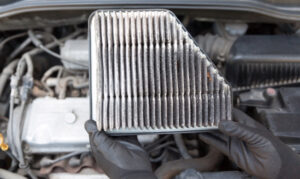Car maintenance is a relatively easy task, that is if you know what to do. It usually takes a few minutes to perform, but most vehicle owners are clueless about the procedure. They either know too little or nothing at all, which makes things difficult.
That’s why we are here to help you out! We have prepared an in-depth maintenance checklist for you. So, you can learn something new and treat your car in the best way possible.
Let’s begin with the basics:
Read the user’s manual
The user manual that comes with your vehicle should be taken seriously. After all, it contains all the necessary information about your car. It also outlines the fundamental maintenance regimen that you should religiously follow
However, the information inside the manual is pretty rudimentary. It is enough to teach you the daily inspection routine.
For monthly and yearly schedules, you need to dive in deeper and do some research. All the new information you will learn should help you keep your car healthy for a long time.
Fortunately, we have all the details you will require right here.
Monthly Maintenance Checkup
Vehicle maintenance might be an easy task, but it is also tedious. That’s why you need to craft a schedule to keep yourself motivated and the car in check. You can put aside some tasks for daily inspection, while others can be divided among monthly and yearly checkups.
To start, you should focus on the heart of your vehicle, which is the engine. Then you can follow up with checking the transmission, the brakes, the tires, and then the rest of the components. In all of these parts, you must first inspect the fluid levels before moving on to the next step.
Do this every month, and you will never be surprised with a breakdown.
- Inspect Engine Lubricant
The engine oil reduces friction inside an engine, which in turn helps the engine to live longer and perform better. Therefore, you must never miss an engine oil inspection date. It is better if you do the checkup daily, but if for some reason you are unable, you can schedule the task in your monthly inspection. Make sure you do not delay checking the fluid for too long, as you might damage the engine by being complacent.
The lubricant levels can be checked using a dipstick found in the engine bay. Its head is usually painted in a bright yellow color so it is easy to spot. This stick has pre-printed min and max markers to check oil levels. If the lubricant is near the minimum, you are due for an oil change. However, in the opposite case, you should clean the dipstick and put it back in its slot.
- Inspect the Brake Fluid
Unless you are driving an old car, the chances are that your vehicle has a hydraulic-based brake system. As such, there will be a container full of brake fluid inside the engine bay that helps the hydraulics. You must keep the level markers in check, or else you could lose braking performance.
- Inspect the Transmission Fluid
The transmission oil is checked using a different dipstick found near the engine block. So, keep your eyes peeled for a bright yellow protruding stick. Once you have it out, thoroughly check the levels and compare them with the max and min markers printed on the stick.
- Examine Coolant Levels
Remember how we talked about friction inside the engine earlier? Well, the coolant is used to dissipate the heat produced by that friction. Without the proper coolant levels, your engine can be in big trouble. So, don’t be complacent, and remember to inspect the fluid. If you have an older car, daily is better Otherwise, once a month is perfect.
- Test the Tire Pressure
Tires need the right air pressure inside them to work perfectly. Although the air doesn’t leak that easily – unless there is a puncture – it helps to keep an eye on the pressure levels once or twice a month. If you are vigilant and careful, you can extend your tire’s life by a few months beyond their general failure date.
Quarterly Maintenance
- Filters
Your car has several filters, some of which must be replaced every quarter of a year, while others can work for longer. The air filter, for instance, needs to be changed every three months, along with the oil filter. The cabin filter can perform well for longer and the fuel filter even longer still. The user manual in your car will explain when you should replace a certain filter. So, try to follow that guideline to the tee.
- Replace Engine Lubricant
You must change the engine oil every 3 months, even if you haven’t driven your vehicle. If it stays in for too long, the engine starts to lose performance, and eventually, the engine’s health gets affected. Therefore, you must keep a keen eye out for the engine lubricant expiry date.
Annual Maintenance Check
- Tire Alignment
Tires can last for years if you take good care of them. However, you must know exactly what to do and when. First off, you must align the tires because, without the proper alignment, your tires can lose tread very quickly. Then you should also get your tires balanced by a trained mechanic. Lastly, don’t forget to rotate your tires by bringing the ones at the front at the back and vice versa. This evens out the wear and allows you to extract the maximum amount of grip from the tires.
Final Thoughts
Cars are expensive machines that need proper care to function perfectly. It is your job as a vehicle owner to cherish your car and keep it maintained at all times. A well-maintained vehicle will never break down. That’s why you should memorise the aforementioned pointers and keep your vehicle purring like a kitten.










